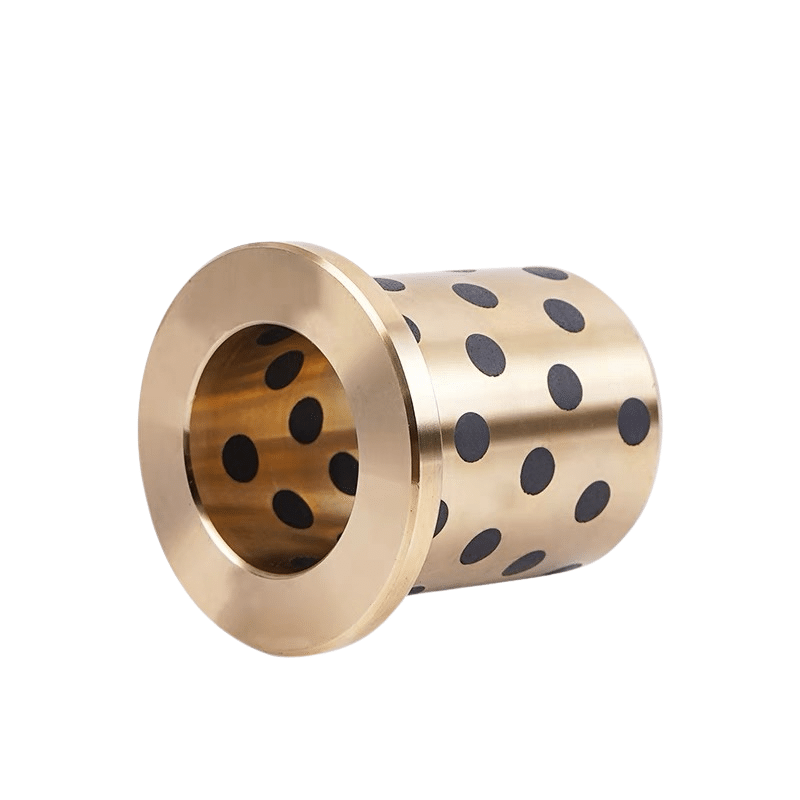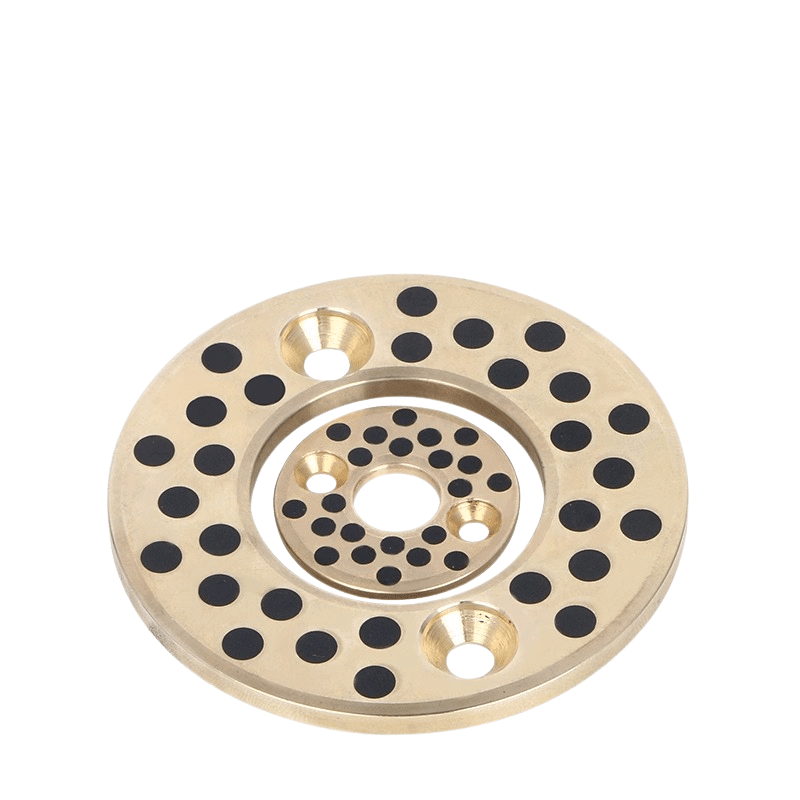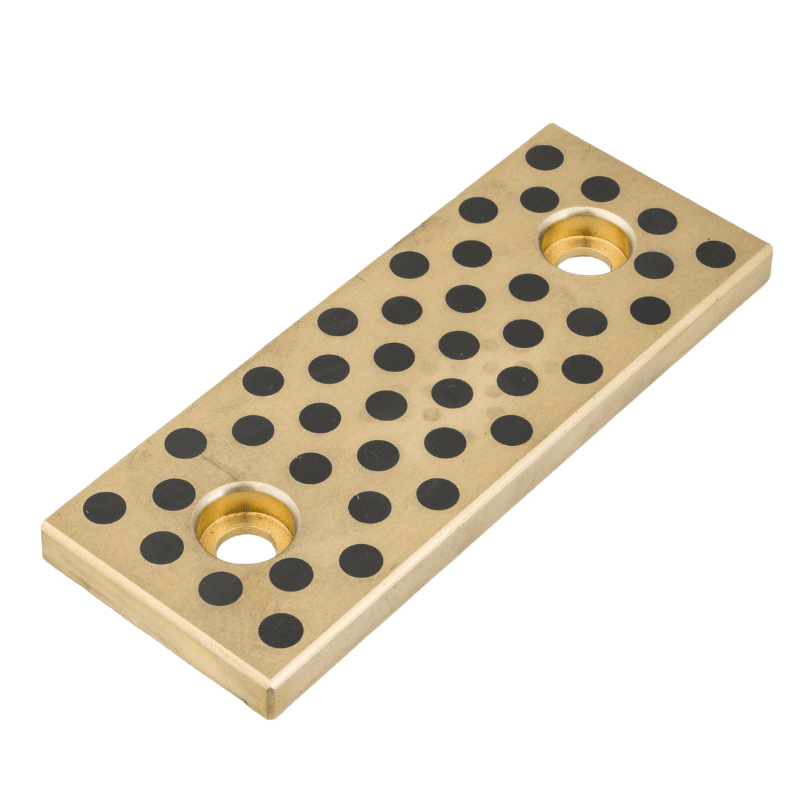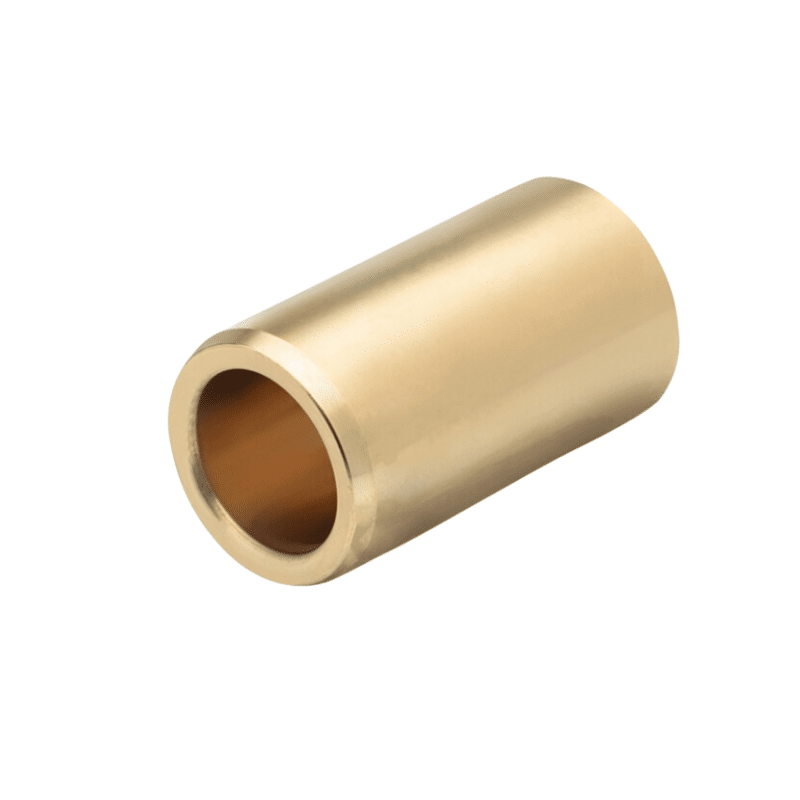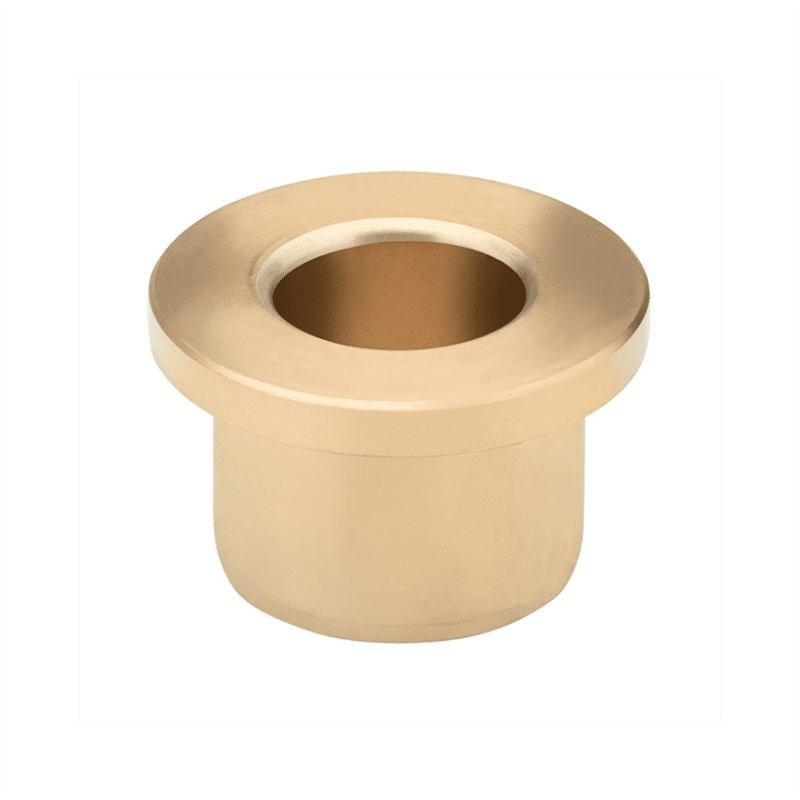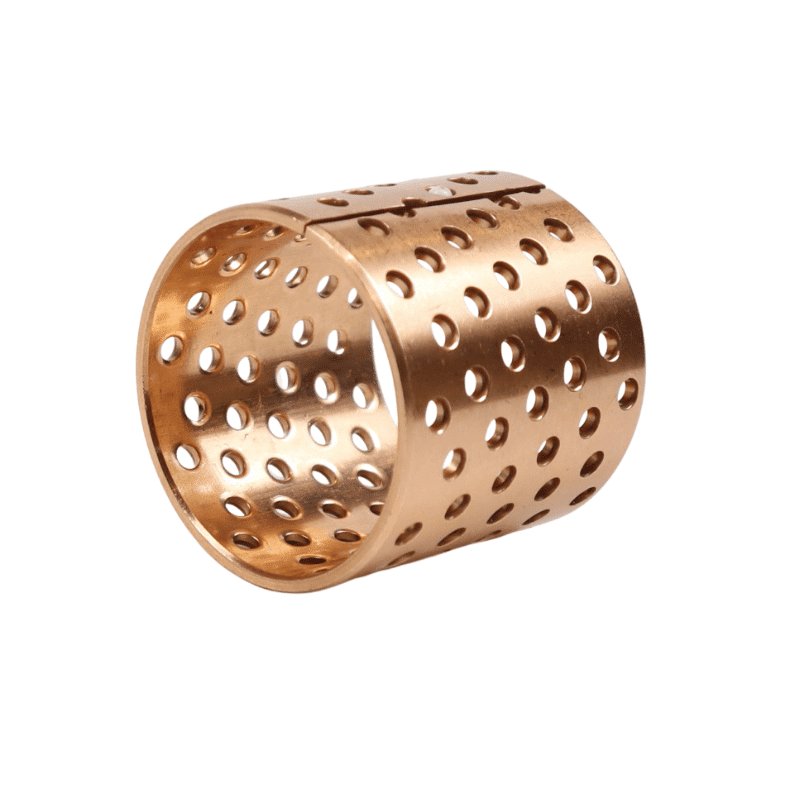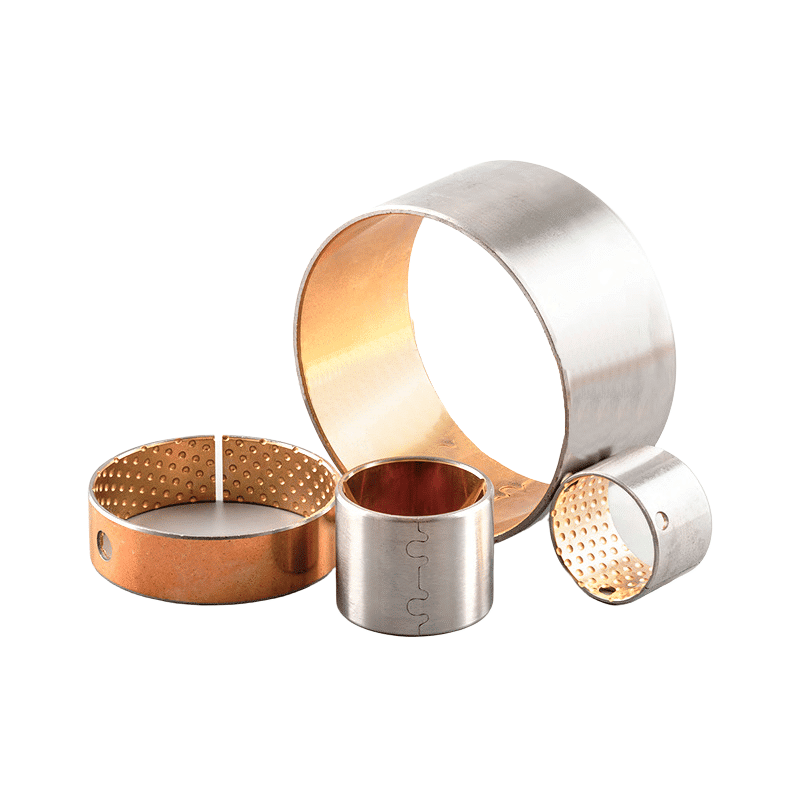Wicket Gate Bearing
Wicket Gate Bearing
Say goodbye to the hassle of frequent lubrication maintenance. Our self-lubricating technology ensures smooth operation and reduces wear and tear, extending the lifespan of your equipment. Experience uninterrupted productivity and cost savings as you bid farewell to the need for messy lubricants and time-consuming upkeep.
Manufacturing on Demand, alternative solutions
Wicket Gate Bearing
We offer parts and services for the marine and industrial sectors, including Wicket Gate Bearings, Bearing Housings, and Self-lubricating Bronze Bearings from our manufacturing facilities. Specializes in sintered self-lubricating bronze bearings, which are metallic and impregnated with lubricant graphite oil holes or groove for low friction.
Manufacturers of Self-Lubricating Wicket Gate Bearings and Bushing, housing and bushing
We provide a range of products including Wicket gate or guide vane bushings, self-lubricating bronze bearings, linkage bushings for Wicket gates, operating rings or guide plates, main shaft or guide bushings, and bearings housings, all featuring self-lubricating bronze bearings. We offers both metallic and non-metallic self-lubricating bearings that can be used for wicket gate applications
Types: Bearings can be traditional bronze bushings or self-lubricating bronze bearing materials like graphite solid lubricated, offering improved wear resistance and longevity, Maintenance: Regular lubrication and inspection are essential to prevent sticking or malfunctioning, ensuring uninterrupted power production. Innovation: Grease-free bushings offer environmental benefits by reducing water contamination and are increasingly replacing traditional lubricated bearings
Manufacturers of Wicket Gate Bearings, Self-lubricating Slide Bearing for Hydro Power and Hydromechanical sector
A wicket gate bearing is a crucial component in hydroelectric power systems. Produces various self-lubricating materials for bearings, including plastics, metal, and bronze/brass bushing, wicket gate bushing offer self-lubricating mechanism under wet/dry application.
Bushings and wear pads are essential components in hydropower units, particularly in the wicket gate mechanism of hydro turbines. They are used to reduce friction and wear, ensuring the long life of the turbine components. Initially, cast iron bushings were used, which were later replaced with greased bronze bushings due to their improved performance. Greased bronze bushings have a high resistance to water washout, high load carrying capacity, and vibration damping, making them suitable for wicket gates. However, greased bushings require regular maintenance and can pose environmental issues due to the leakage of grease into waterways.
In recent years, greaseless bushings have been developed to address these concerns. These bushings can be classified into two groups: metallic and non-metallic. Metallic bushings are usually bronze-based, with anti-friction and dry lubricant compounds dispersed on the bearing surface. Non-metallic bushings are typically plastic or composite materials with anti-friction compounds on the bearing surface, with PTFE being the most prevalent material used for anti-friction.
The primary advantage of greaseless bushings is their reduced need for lubrication and maintenance. They are suitable for a wide range of temperatures and can function without external energy sources, saving energy costs. However, greaseless bushings have a higher failure rate compared to greased bushings, with an estimated failure rate of 25%
Bushings and wear pads play a crucial role in the performance and longevity of hydropower units. While greased bushings have proven to be reliable, greaseless bushings offer advantages in terms of reduced maintenance and energy savings. The choice between greased and greaseless bushings depends on the specific application requirements, considering factors such as load, temperature, speed, and environment.
The Importance of Self-Lubricating Bushings in Hydroelectric Power Plants
Self-lubricating bushings are critical components in hydroelectric power plants, especially for applications that involve high pressures, heavy loads, and challenging environmental conditions. These bushings are engineered to operate without external lubrication, which reduces maintenance needs and mitigates environmental risks associated with oil or grease contamination.
Key Components and Applications
Thrust Bush for Wicket Gate Graphite:
- Function: Thrust bushings are used in wicket gates to ensure smooth operation and control of water flow. They handle axial loads and provide stability.
- Material: Typically made from bronze with graphite plugs, these bushings offer excellent wear resistance and low friction.
- Benefits: They enhance the efficiency of wicket gates by reducing maintenance downtime and preventing oil leakage into water bodies.
Screw for Thrust Bush Graphite:
- Function: Screws secure thrust bushings in place, ensuring they remain stable under operational loads.
- Material: Often made from high-strength materials like stainless steel to withstand harsh conditions in hydro plants.
- Benefits: Properly secured thrust bushings improve the reliability and longevity of wicket gate mechanisms.
Upper Stem Bush for Wicket Gate Graphite:
- Function: Upper stem bushings support the upper part of the wicket gate stem, facilitating smooth vertical movement.
- Material: These bushings are typically made from self-lubricating materials like bronze with graphite plugs.
- Benefits: They provide high dimensional stability and resistance to wear, ensuring consistent performance in wet conditions.
Lower Stem Bush for Wicket Gate Graphite:
- Function: Lower stem bushings support the lower part of the wicket gate stem, aiding in the smooth operation of the gate.
- Material: Similar to upper stem bushings, these are made from self-lubricating bronze with graphite plugs.
- Benefits: They offer excellent chemical resistance and durability, crucial for the lower part of the wicket gate which is often submerged.
Advantages of Self-Lubricating Bushings in Hydroelectric Power Plants
- Maintenance-Free Operation: These bushings do not require regular lubrication, significantly reducing maintenance efforts and costs.
- Environmental Sustainability: By eliminating the need for oil or grease, self-lubricating bushings help prevent contamination of water bodies, supporting environmental conservation efforts.
- Durability and Reliability: Made from high-performance materials, these bushings can withstand harsh conditions, including high loads, wet environments, and corrosive substances.
- Cost-Effectiveness: Reduced maintenance and longer service life translate to lower operational costs over time.
Conclusion
Self-lubricating bushings, particularly those made from bronze with graphite plugs, are vital for the efficient and sustainable operation of hydroelectric power plants. They are used in various components such as thrust bushings, upper and lower stem bushings for wicket gates, and screws for securing these bushings. Their ability to operate without external lubrication, combined with their durability and environmental benefits, makes them an ideal choice for hydroelectric applications
The Evolution and Applications of Bushings in Hydro Units
In the realm of hydroelectric power generation, bushings, bearings, and wear pads play a pivotal role in ensuring the smooth operation of a hydro turbine’s wicket gate mechanism. This article delves into the evolution, uses, and advancements in the technology of bushings, particularly focusing on the transition to self-lubricating bearing bushes.
Historical Context and Traditional Materials
Historically, over a century ago, bushings in hydro turbines were predominantly made from cast iron, a material that inherently contains embedded graphite, which provides some level of self-lubrication. These bushings would operate against steel surfaces, with water flow through the turbine assisting in lubrication. However, as technology progressed, the introduction of grease and anti-friction materials like bronze significantly reduced wear and enhanced the durability of these components.
Bronze Bushings: A Reliable Choice
Bronze has become a material of choice for bushings in the hydro sector, particularly the tin bronze family, due to its favorable properties. These include a low tendency to adhere to steel, high load-carrying capacity, excellent corrosion resistance, and the ability to provide superior protection to the journals they interact with. To optimize their performance and longevity, these bronze bushings require proper lubrication, typically achieved through oils, greases, or solid lubricants.
Grease, in particular, stands out as a preferred lubricant for wicket gates, owing to its resistance to water washout, its ability to carry high loads, and its vibration damping properties. Unlike ordinary oils, lubricating greases contain thickening agents that enable them to stay in place and provide consistent lubrication even under challenging conditions.
Advances in Self-Lubricating Bushings
The evolution of bushing technology has led to the development of greaseless or self-lubricating bushings. These innovative components are designed to reduce maintenance needs and provide reliable service in environments where lubrication might be challenging. They fall into two main categories:
- Metallic Bushings: Typically made from bronze, these bushings incorporate anti-friction and dry lubricant compounds such as PTFE (polytetrafluoroethylene) or molybdenum disulfide directly on the bearing surface. The integration of these materials allows for reduced friction and wear without the need for additional lubrication.
- Non-Metallic Bushings: These are generally composed of plastic or composite materials, with anti-friction compounds applied to the bearing surface. PTFE is a common choice for its low coefficient of friction, complemented by other materials like molybdenum disulfide and graphite for enhanced performance.
Practical Applications and Selection
In hydroelectric power plants, the choice of bushing material and type is critical and often based on the specific conditions and requirements of the turbine and its environment. For example, polymer-lined bushings may be favored for their resistance to abrasive particles like silt in river units, while plugged bronze bushings might be preferred in high-load applications due to their robustness.
It’s crucial to note that while greaseless bushings offer the advantage of reduced maintenance, they are designed to wear gradually as part of their operation. The wear process for plugged bronze bushings involves the gradual erosion of the plug material to release the lubricant, while polymer and composite bushings rely on the inherent low friction of their materials.
Conclusion
The ongoing advancements in bushing technology underscore the hydro industry’s commitment to improving efficiency and reducing maintenance demands. Self-lubricating bushings represent a significant step forward, offering durable and reliable solutions that cater to the unique demands of hydroelectric power generation. As these technologies continue to evolve, they promise to play a vital role in the sustainable and efficient operation of hydro units worldwide.
Wicket Gate / Operating Bearing, Lubrication Bronze Bearing for Wicket Gate Bushings
Bearings/bushings, plates, pads, Wicket Gate Bushing / Hydro Bearing / Turbine Bush,
Hydro Bearings for Hydropower Applications, Self Oil Bearing Graphite Bronze Bushing Casting Bushes Self Lubricating Sliding
WICKET GATE BEARING MIDDLE BUSHING
Wicket gate bushings play a pivotal role in the functionality of hydropower systems, with self-lubricating bearings increasingly becoming the norm for these applications. These bearings are infused with lead-free solid lubricants, eliminating the need for frequent external lubrication and upkeep. Engineered to minimize friction and wear, they enhance the durability of wicket gate bushings and are perfectly suited for the demanding conditions found in hydropower operations. The adoption of self-lubricating bearings in wicket gate bushings brings advantages such as reduced maintenance, eco-friendliness, and corrosion resistance, all of which contribute to the efficient and dependable performance of hydropower systems.
Minimize friction and wear to extend the lifespan of your wicket gate bushings. Using a greased bushing helps to prevent silt accumulation and offers significant resistance to water washout.
Function: Wicket gates are adjustable blades or vanes positioned around the turbine runner in a hydroelectric power plant. The wicket gate bearing facilitates the smooth operation and movement of these gates, allowing for precise control of water flow to the turbine.
Importance: Proper functioning of wicket gates ensures efficient energy generation by regulating water flow. Bearings reduce friction, enabling smooth gate adjustments, optimizing power output。
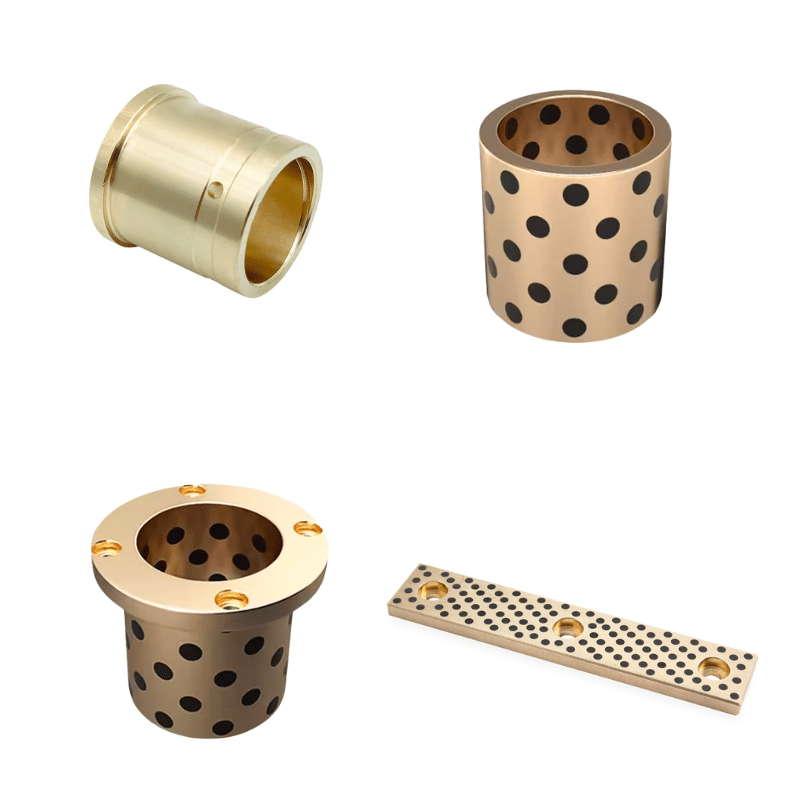
Wicket gate bearings play a pivotal role in hydroelectric power generation, facilitating the smooth operation of gates that regulate water flow towards the turbines. There are several manufacturers that specialize in self-lubricating materials for these bearings, offering advanced solutions.
Our provider offers self-lubricating bronze shaft bearings designed to withstand high operational pressures up to 45 MPa (6,527 psi). These bearings are engineered for both wet and dry operations, eliminating the need for greased bearings, and thereby reducing maintenance demands and environmental hazards. This company provides a comprehensive suite of services, including the installation, commissioning, servicing, and maintenance of their products.
We produce self-lubricating sleeve bronze bearings. These metallic components feature high porosity, impregnated with lubricating oil, and are intended for hydrodynamic conditions, recognized to a significantly low friction coefficient. They offer tailor-made solutions regarding materials, oil types, shapes, tolerances, and assembly methods, catering to a variety of applications across automotive and industrial sectors.
Our company specializes in both metallic and non-metallic self-lubricating bearings for wicket gate applications. Their offerings include metallic bronze lubricated bearings that ensure self-lubrication in both wet and dry conditions and can be machined on-site. They stand out for their quick product availability and bespoke solutions designed to accommodate overhaul schedules.
We focuses on self-lubricating materials made from plastics, metal, bronze/brass, graphite-plugged bronze, and various oilless bearings. They serve a wide array of industries, providing customizable solutions with low minimum order requirements.
We have been providing self-lubricating bearings for hydropower and watergate applications. They offer a selection of bearings tailored to the unique needs of the hydropower sector, including bearings with housing materials such as Steel grade SC49W, 20# steel, and 45# steel, or equivalent. Their product range encompasses a variety of standard inch and metric self-lubricating bearings in journal and thrust configurations, suitable for diverse applications.
When choosing a manufacturer for wicket gate bearings, it’s crucial to assess the specific needs of your application, considering factors like load capacity, operational environment, and maintenance requirements. The manufacturers mentioned above offer a wide range of self-lubricating bearing products and services, customizable to meet the demands of hydroelectric power generation facilities.
Wicket Gate Bearing Manufacturers
Wicket gate bearings are essential for the smooth operation of gates in hydroelectric power plants. These bearings often utilize self-lubricating materials to reduce maintenance and enhance performance. When considering the housing material for these bearings, steel grade SC49W or equivalent is a common choice due to its strength and durability.
the material for bearing housings, steel grade SC49W is referenced in discussions about various bearing products. quality bearing housings tailor-made solutions employing SC49W or similar materials.
Steel grade SC49W refers to Type 439 stainless steel, which is an 18% chromium, titanium stabilized ferritic stainless steel. It has corrosion resistance similar to that of 304/304L stainless steel and may be used in the annealed, cold formed, or as-welded condition in applications where other stainless steels such as Type 304/304L and Type 430 are used. Type 439 is known for its good weldability due to titanium stabilization and has excellent resistance to stress corrosion cracking. This grade outperforms Type 409 in both oxidation and corrosion resistance and is typically used in applications such as tubular manifolds and exhaust system components
When choosing a supplier for wicket gate bearings, it’s important to consider the specific demands of your application, including the load capacity, operational environment, and maintenance requirements. It’s advisable to reach out directly to these manufacturers to explore their options for wicket gate bearings using self-lubricating materials and SC49W housing.
Our high-performance metallic and bronze graphite bearings are specifically designed for use in the hydro industry.
Characteristics of Self-Lubricating Bronze Bushing Bearings:
- Maintenance-Free: Eliminates or significantly reduces the need for lubrication, allowing operation without oil or grease.
- Eco-Friendly: Prevents environmental contamination through oil leakage.
- Cost Efficiency: Lowers the need for lubricating oil and decreases maintenance expenses, recognized to significant operational cost savings.
- Corrosion Resistance: Suitable for use in corrosive settings, including damp conditions.
- Versatility: Offers the option to select between metallic and plastic bearings based on usage requirements.
Bearing Uses:
- Water Turbine
- Bushings for Wicket Gates or Guide Vanes
- Linkage Bushings for Wicket Gates
- Bushings and Plates for Operating Rings or Guides
- Bushings and Seal Bearings for Main Shafts
- Bushings for Kaplan Turbine Runners or Blades
- Bushings for Inlet Butterfly Valve
Gate Bearings
Self-lubricating bearings are extensively utilized across a variety of applications, notably in gate and hydroelectric power systems. These bearings incorporate lead-free solid lubricants, minimizing the necessity for external lubrication and ongoing maintenance. Tailored specifically for the hydropower sector, these bearings find applications in areas such as wicket gate bushings and guide vane bushings for water turbines, among others.
We supply self-lubricating bearings tailored for diverse uses, including gate and lift systems. Recognized for their maintenance-free nature, eco-friendliness, and corrosion resistance, these bearings are ideally suited for demanding operational conditions.
Installing a wicket gate bearing with a self-lubricating bronze bushing and its housing includes a series of steps. Follow these general instructions for a successful installation:
Verify Correct Sizing: Before proceeding, confirm that the bushing is the right size and dimension for its intended use. It should fit securely within the housing or bore.
Ensure Cleanliness: The housing or bore must be free from dirt, debris, and any contaminants to ensure a clean environment for installation.
Light Lubrication Application: Though self-lubricating bushings are designed to operate without additional lubrication, applying a thin layer of compatible lubricant can facilitate the initial fitting. Distribute the lubricant evenly within the housing or bore.
Bushing Insertion: Gently place the bushing into the housing or bore, ensuring it slides in effortlessly and meets no resistance.
Bushing Securing: Once positioned, ensure the bushing is firmly secured. This might involve the use of a retaining clip or applying adequate pressure to the housing or bore.
Installation Testing: Conduct a test to verify the bushing’s functionality post-installation. It should demonstrate smooth movement without any hindrance or resistance.
Adhering to the manufacturer’s installation guidelines is crucial for the component’s optimal performance. Additionally, seeking advice from a bearing manufacturer or an engineering professional is recommended to guarantee the installation is executed correctly.
-Installation of bearing housings operating instructions-
Bearing housing mounting method I,
Press-in collaboration method
Installation of the bearing seat, the first press to press the bearing on the shaft, then the shaft and bearing into the bearing seat at the same time, and the bearing seat in the press need to pay attention to the end of the inner ring in the bearing surface, using a soft metal material manufactured equipment casing pad, and the equipment casing diameter than the journal of the diameter of the larger, and the outer diameter should be smaller than the inner ring of the bearing retaining edge.
At this time the bearing outer ring to work closely with the bearing seat, if the inner ring and shaft collaboration is relatively loose, you can first press the bearing into the hole of the bearing seat, it should be noted that the outer diameter of the equipment casing should be smaller than the diameter of the seat hole of the bearing seat; and if the bearing collar and shaft, seat hole are very tight cooperation, the need for the inner ring and outer ring at the same time pressed into the shaft and seat hole of the bearing seat.
Bearing seat installation method two,
Heating collaboration method
This is a commonly used, labor-saving, is through the bearing heater thermal expansion will be tight collaboration into loose collaboration bearing housing installation method. First of all, the bearing or separation type bearing collar into the oil tank heating, need to pay attention to the oil temperature should be in the range of 80-100 ℃; then wait for the heating from the mailbox and immediately put the bearing seat on the shaft, and finally in order to avoid the bearing cooled down, if the inner ring end face and the shaft shoulder of the fit does not appear tight, you can once again axial fastening.
When the outer ring of the bearing and the bearing housing close fit, the bearing housing for heating, can avoid abrasion collaboration surface. It should be noted that, in the selection of the oil tank for heating the bearing seat, can not put the bearing directly to the bottom of the box, and to be placed in a distance from the bottom of the box at fixed intervals of a mesh fence, or directly with a hook hanging bearing; and in the oil tank to have a thermometer, as well as can not be more than 100 ° C oil temperature, this time to prevent tempering effect, resulting in a decline in the hardness of the ring.
Bearing housing installation method three, Tapered hole-bearing equipment
Will tighten the sleeve and back off the sleeve installed in the bearing housing taper, or the tapered bore bearing equipment installed in a taper journal, or the choice of bearing radial clearance can reduce the amount to balance the tightness of the bearing housing. In the use of equipment before the first bearing radial clearance measurement, as well as equipment in the operation process should be regular measurement of clearance, until the arrival of the required clearance reduction amount to stop. Bearing seat is generally used lock nut for equipment, can also use heating equipment method.
Bearing seat installation method four,
Thrust bearing equipment
This thrust bearing housing installation method is relatively simple, first of all, the two-way thrust bearing center shaft spring fixed on the shaft, the purpose is to avoid the bearing housing in the shaft rolling, bearing inner ring and shaft collaboration is categorized as interference collaboration, bearing outer ring and bearing room collaboration is categorized as clearance collaboration.
→ Knowledge Expansion
-The role of the bearing seat and common problems
1, the role of the bearing seat
Bearing housing as a close partner of the bearing, bearing housing is a more important part of the entire shaft system. Bearing housing is generally installed at both ends of the shaft, which supports and fixes the bearing is the main role of the bearing housing, the purpose is to make the shaft and the connecting parts have positional relationship. In addition, the bearing housing usually has a sealing device, so as to reduce bearing contamination.
2、Common problems of bearing housings
Wear when the bearing housing is more common problems, therefore, the bearing housing will often occur wear phenomenon.
Contact Us
The Wicket gate, bronze bearings, and operating bush offer a self-lubricating mechanism under wet/dry application. For inquiries or to request a catalog, contact us today! We offer both metallic and non-metallic self-lubricating bronze bearings.
Your expert in self-lubricating Bearing
and Bronze alloys – serving globally
Brand replacement products and functionally equivalent parts, alternative solutions
Manufactures flange bronze bearings, service & maintenance companies to meet the exacting specifications required in a wide range of industrial applications.
Machined bronze bushing that meet the exacting requirements & specifications supplied by our clients. Spherical bearings, spindles, semi-spheres and supports that we have manufactured.
You will find to follow a selection of self lubricating bronze bearing material CuSn7Zn4Pb7, CuSn12, CuAl10Fe5Ni5,
CuZn25Al5Mn4Fe3
Alternative solution,We offer an outsourced machining service for bronze bushes, manufacturing precise parts to the designs supplied to us by our clients.
Selection of other composite bushing material of self lubricating bearing that we have manufactured.
Wrapped Bronze Sleeve Bearing, Are you interested in our products?
Manufacturer of bimetal and steel bronze bushing parts according to client’s drawing.

